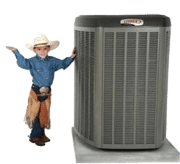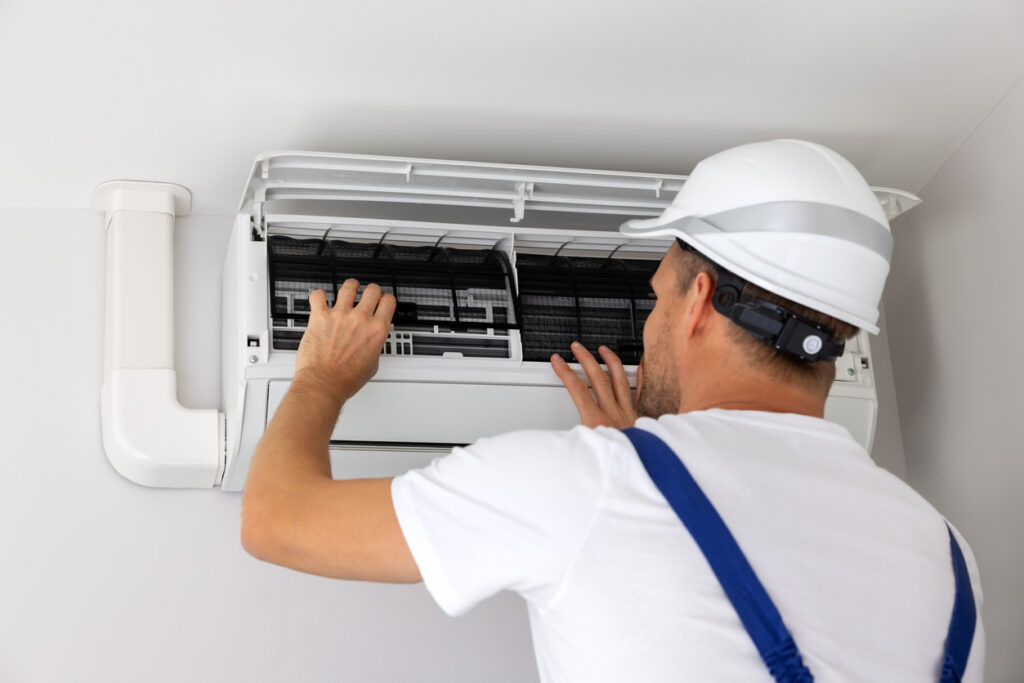In the world of heating, ventilation, and air conditioning (HVAC), thermostats are often seen as mere temperature control devices. However, their role extends far beyond that. A well-functioning thermostat is crucial for maintaining comfort in your home while also ensuring that your air conditioning system operates efficiently. In this article, we’ll explore the significance of thermostats in AC repair and overall system efficiency, shedding light on how modern advancements in thermostat technology can enhance performance and reduce energy consumption.
1. Understanding Thermostat Basics
A thermostat is a device that regulates the temperature of your home by controlling your HVAC system. It monitors the ambient temperature and signals the air conditioning unit to turn on or off as needed. Thermostats can be either mechanical or digital, with digital thermostats offering more features and precision. Understanding these basics is essential for homeowners seeking to optimize their AC systems and troubleshoot potential issues during repairs.
2. The Impact of Thermostat Accuracy on AC Performance
Thermostat accuracy plays a pivotal role in the efficiency of your AC system. An inaccurate thermostat can lead to improper temperature readings, resulting in the air conditioning unit running longer than necessary or shutting off too soon. This can cause increased energy bills and unnecessary wear and tear on the system. Regular calibration and maintenance of thermostats ensure that they provide accurate readings, contributing to optimal AC performance.
3. Smart Thermostats: The Future of HVAC Efficiency
The advent of smart thermostats has revolutionized how we interact with our HVAC systems. These devices can learn your preferences, adjust temperatures automatically, and be controlled remotely via smartphone apps. Smart thermostats can also analyze energy usage patterns, providing insights that help homeowners make informed decisions about their cooling habits. By minimizing energy consumption during peak hours, smart thermostats contribute significantly to system efficiency and cost savings.
4. Troubleshooting Common Thermostat Issues
Thermostat problems can lead to significant discomfort and inefficiency. Common issues include unresponsive units, incorrect temperature readings, or connectivity problems in smart thermostats. Identifying these issues promptly can prevent costly repairs and ensure your AC system operates smoothly. Homeowners should routinely check their thermostats for dust and debris, ensure proper placement away from heat sources, and replace batteries in battery-operated units.
5. The Role of Thermostats in Preventive Maintenance
Preventive maintenance is crucial for prolonging the life of your AC system, and thermostats play an essential role in this process. By scheduling regular HVAC inspections, technicians can assess thermostat functionality alongside other system components. During these inspections, they can identify potential issues early on, ensuring that both the thermostat and the AC system work together seamlessly for maximum efficiency.
6. Enhancing Comfort Through Zoning Systems
Zoning systems, often paired with programmable or smart thermostats, allow homeowners to control temperatures in different areas of their homes independently. This capability enhances comfort and energy efficiency, as it enables you to avoid cooling unused spaces. By installing zoning systems and adjusting thermostat settings accordingly, you can significantly reduce energy consumption while maintaining optimal comfort levels throughout your home.
7. The Connection Between Thermostats and HVAC Longevity
A well-functioning thermostat not only ensures comfort and efficiency but also contributes to the longevity of your HVAC system. When thermostats are accurately calibrated and regularly maintained, they help prevent the overworking of AC units, which can lead to premature failures. By investing time in thermostat upkeep, homeowners can extend the lifespan of their air conditioning systems and reduce the need for costly repairs.
8. Future Innovations in Thermostat Technology
As technology continues to advance, we can expect even more innovations in thermostat design and functionality. Upcoming trends include enhanced machine learning algorithms for smart thermostats, greater integration with home automation systems, and improved energy monitoring features. These advancements will further enhance thermostats’ role in HVAC efficiency, making them integral components in modern energy-saving strategies.
Thermostats are vital players in the performance and efficiency of air conditioning systems, particularly in the context of AC repair. From ensuring accurate temperature control to enabling advanced features in smart thermostats, their role cannot be underestimated. By understanding how thermostats function and investing in their maintenance, homeowners can enjoy enhanced comfort, lower energy costs, and prolonged HVAC system life. As technology evolves, the importance of thermostats in AC service will only increase, making them essential tools in the quest for energy efficiency and effective climate control.
Enhance your HVAC system’s efficiency with expert AC repair from Ainsworth & Co. Our knowledgeable team ensures optimal thermostat performance for comfort and savings. Call us today at 281-837-8454!











